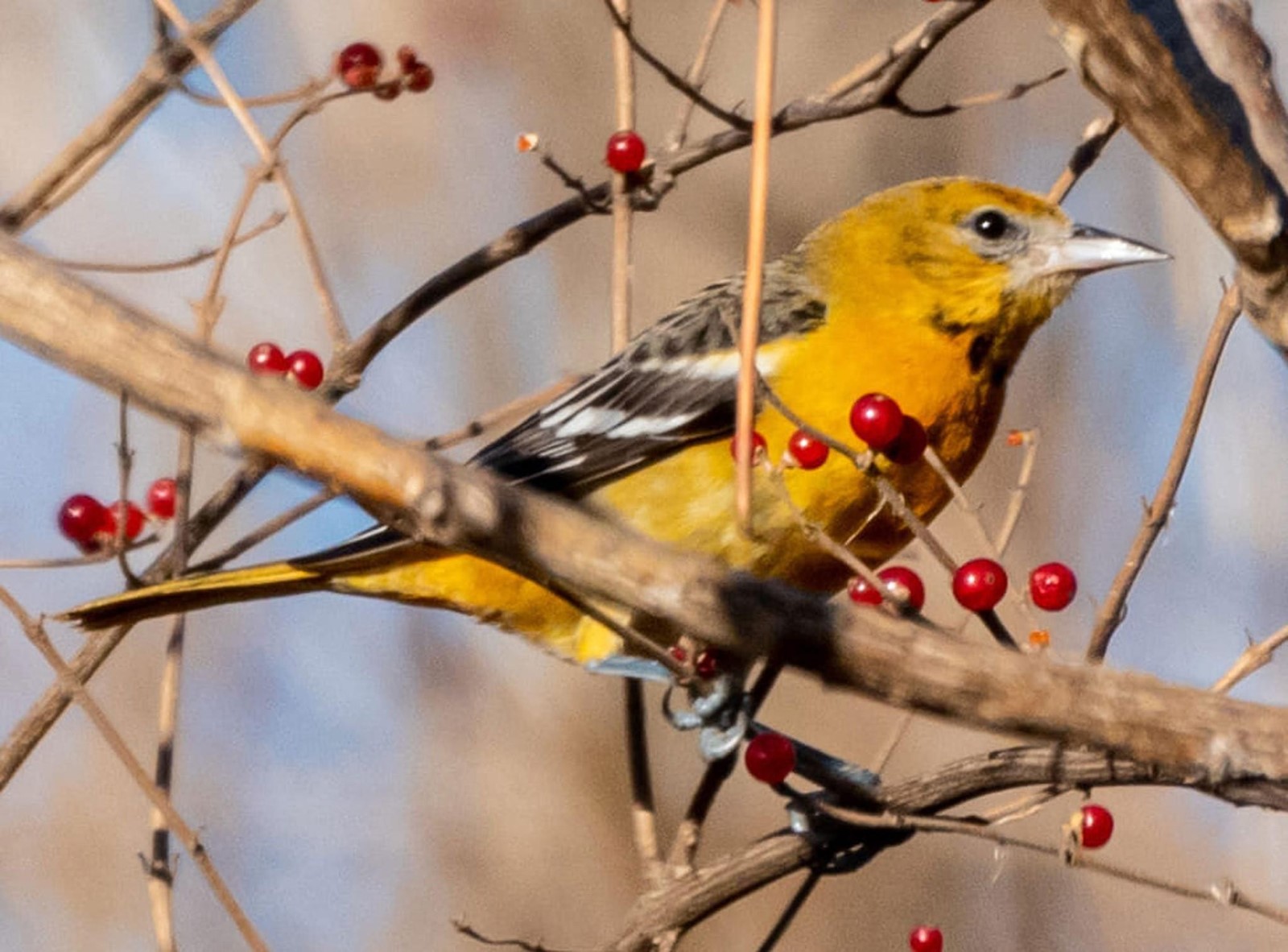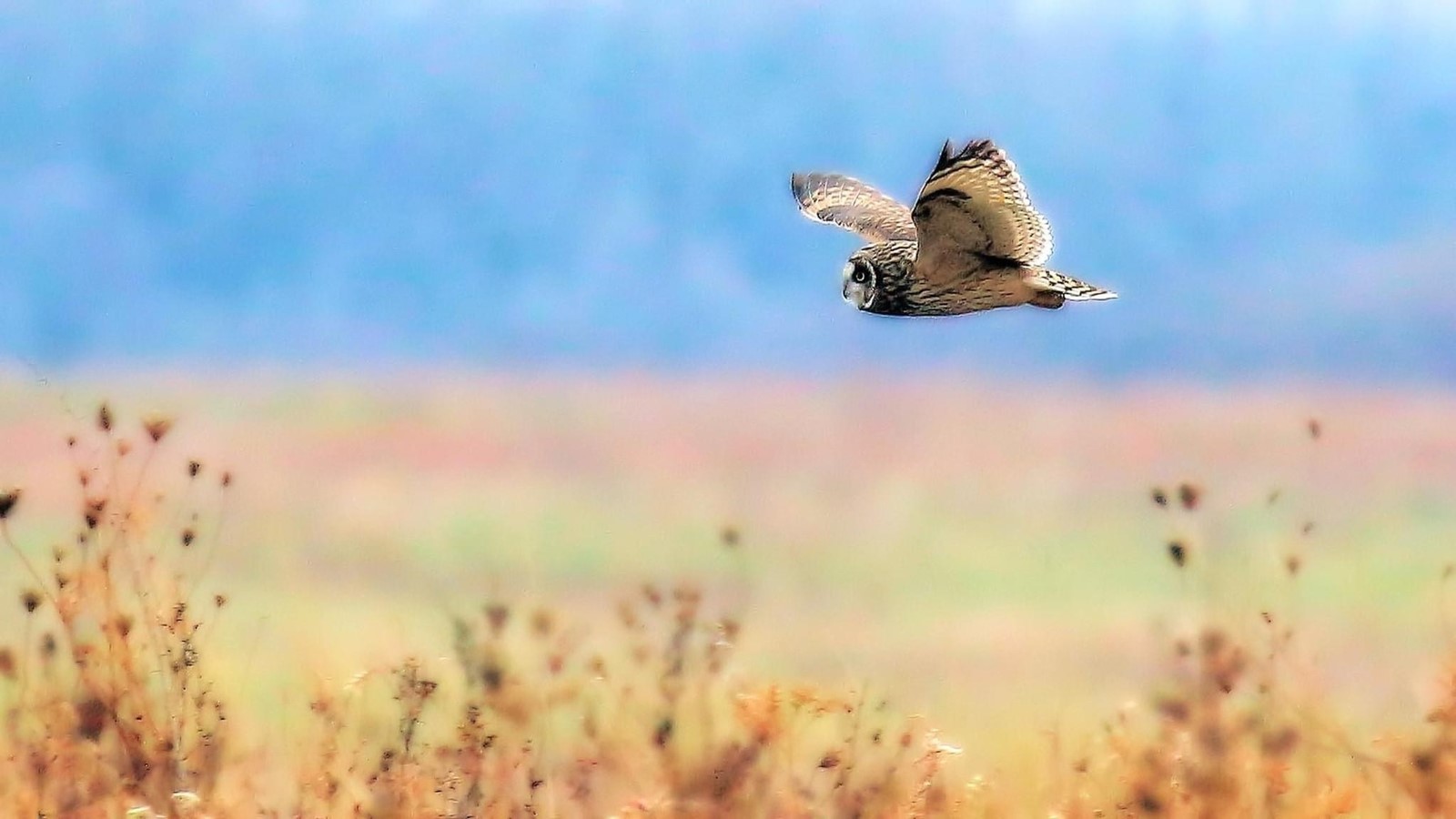Winter is perfect time to see unusual birds migrating through northern Illinois


Avoiding winter cabin fever during winter can be tough and during a pandemic, even tougher.
One respite recommended by naturalist Bob Bryerton is bird watching, and northern Illinois is perfect for it.
Bryerton, a program coordinator for the Forest Preserve District of Will County, has been watching and counting birds for the last 25 years. Nature lovers might be surprised by what they see, he said.
“Winter is a great time to start birding because you can get familiar with just 10 or 15 species,” he said. “That way, when warmer weather comes and more birds arrive, you can tell them apart.”
And thanks to social media, Identifying birds and learning about where various species are appearing is a lot easier than it was than in pre-computer days, when people had to rely on books to figure out what they were seeing.
The forest preserve district is doing its part with a recently compiled a list of rare and unusual species spotted by bird watchers and naturalists in Will County.
For example, black-bellied whistling ducks made a stop at the Monee reservoir in Monee Township.
A Baltimore oriole was seen surprisingly late in the season at Rock Run Rookery in Joliet.
A yellow-crowned night heron and American avocets appeared at Whalon Lake in Naperville.
A Eurasian wigeon and a great kiskadee were sighted in Channahon, the latter in early December.
“The kiskadee is a rare sighting — it might have been blown off course by a hurricane,” Bryerton said. “Kiskadees are not native to Illinois. They’re from southern Texas, Central and South America, and they’re not a migratory bird. Lots of people have been coming out to look at them.”
Another birding spot that starts heating up in early December is the Midewin National Tallgrass Prairie in Wilmington.
On a recent weekend along the Group 63 Trail, several birds of prey and other wildlife flew amid the bison captured on the park’s webcam. Because the animals’ grazing reduces the grasses to stubble, it’s a literal field day for red tailed hawks, kestrel falcons and others hunting for voles and mice.
According to the
A hike through the prairie includes a couple of detours to tree-covered concrete bunkers, remnants left behind when the old Joliet Army Ammunition Plant was decommissioned and Midewin established. The woods provide cover for pheasants, woodpeckers, sparrows, crows and finches, naturalists said. Other animals can be spotted there, too, including deer.
One of the best times to see migrating bald eagles is January. The birds tend to follow waterways like the Des Plaines, DuPage, Fox and Illinois rivers. Many watchers will gather at Starved Rock State Park in Utica or towns along the Illinois River with water views.
Perhaps one of the best places to see unusual birds is the
In the winter months, bald eagles, American white pelicans and hundreds of winter waterfowl can be seen, the district website says.
The preserve is open to the public from 8 a.m. to sunset from mid-August through February before being closed to everything but public programs and guided bird viewing from March to mid-August in order to disturb breeding.
For those wanting to learn about when and where to see different types of birds, Bryerton recommended establishing an account with
“By reporting bird sightings to eBird,” Bryerton said, “bird watchers also contribute important scientific information.” The Cornell Lab of Ornithology manages eBird’s collaborative tracking effort.
The eBird app links to birding hot spots all over the world but it can be easily dialed down to Illinois. Locations include local nature centers like Little Red School House in Cook County as well as Chicago parks and lakefront areas.
Just setting up bird feeders is a great way to have birds come to you, Bryerton said. “Winter is a great time to feed the birds. As we get storms and the temperatures drop, birds rely more on feeders. So, if you have a feeder, you’ll see them.”
He recommended placing feeders in areas planted with shrubbery or low-hanging tree branches so birds can easily escape predators.
For backyard birders wanting to contribute scientific data used by the Cornell Lab of Ornithology, National Geographic and the National Audubon Society, go to
The Audubon Society also offers a link to local birding hot spots at


 PREVIOUS ARTICLE
PREVIOUS ARTICLE
